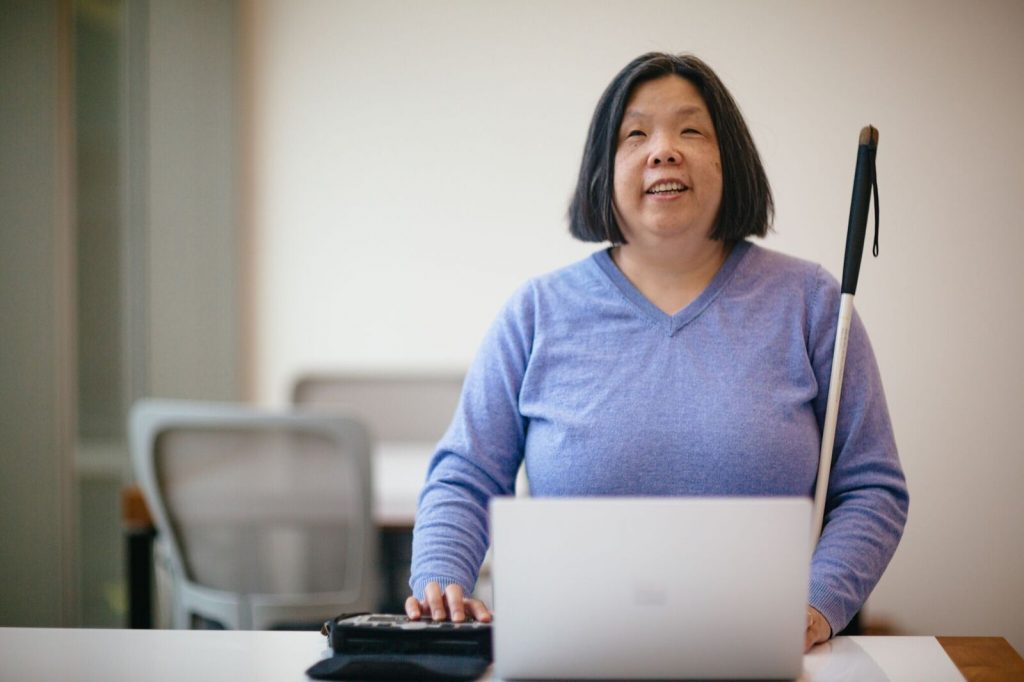
At Microsoft, we believe advancements in technology can be a force multiplier in unlocking solutions for some of the biggest challenges facing society. That’s why last year we announced AI for Earth, a comprehensive program to apply artificial intelligence towards unlocking solutions to climate, water, agriculture and the biodiversity issues facing our planet. Today at the Microsoft Build conference in Seattle, we are expanding on that model by launching AI for Accessibility, a new $25 million, five-year program to put AI tools in the hands of developers to accelerate the development of accessible and intelligent AI solutions to benefit the 1 billion-plus people with disabilities around the world.
AI can be a game changer for people with disabilities. Already we’re witnessing this as people with disabilities expand their use of computers to hear, see and reason with impressive accuracy. At Microsoft we’ve been putting to work stronger solutions such as real-time speech-to-text transcription, visual recognition services and predictive text functionality. AI advances like these offer enormous potential by enabling people with vision, hearing, cognitive, learning, mobility disabilities and mental health conditions do more in three specific scenarios: employment, modern life and human connection.
Around the world, only one in 10 people with disabilities has access to assistive technologies and products. By making AI solutions more widely available, we believe technology can have a broad impact on this important community.
Our AI for Accessibility program aims to do just that. It will be run by our Accessibility team and its leader, Jenny Lay-Flurrie, our chief accessibility officer. Building on their success over the past three years with developers and engineers across Microsoft, their expanded mission is to provide a new level of tools and support for developers and around the world.
The AI for Accessibility program will do this in three ways. First, we will provide seed grants of technology to developers, universities, nongovernmental organizations, and inventors taking an AI-first approach focused on creating solutions that will create new opportunities and assist people with disabilities with work, life and human connections. Next, we will identify the projects that show the most promise and make larger investments of technology and access to Microsoft AI experts to help bring them to scale. And third, as we infuse AI and inclusive design across our offerings, we will work with our partners to incorporate AI innovations into platform-level services to empower others to maximize the accessibility of their offerings.
We have started to see the impact AI can have in accelerating accessible technology. Microsoft Translator is today empowering people who are deaf or hardofhearing with real-time captioning of conversations. Helpicto, an application that turns voice commands into images, is enabling children in France with autism to better understand situations and communicate with others. And, Seeing AI and auto alt-text features are helping narrate the world for people who are blind or low vision.
One recent inspiring example is Eric Bridges, CEO of the American Council of the Blind, who uses the Seeing AI on a daily basis. He shared how he uses it to help his 3-year-old son, Tyler, to complete his schoolwork. Eric uses the app to scan Tyler’s work, giving him the ability to review his son’s work. With Seeing AI, Tyler can complete a task – and forge new connections with his father – that just two years ago required the assistance of a sighted person.
Disabilities can be permanent, temporary or situational. By innovating for people with disabilities, we are innovating for us all. By ensuring that technology fulfills its promise to address the broadest societal needs, we can empower everyone – not just individuals with disabilities – to achieve more.
And this is just the beginning. We cannot wait to see what you create with AI for Accessibility.
